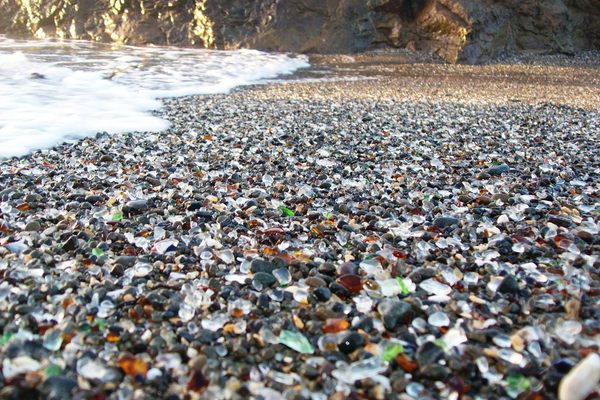LA’s Patron Saint is a Third-Century Martyr in a Postmodern Tomb
Saint Vibiana’s tomb in the crypt of Our Lady of the Angels Cathedral (photo by the author)
St. Vibiana is always on trend. No wonder she’s the patron saint of Los Angeles. She’s currently located in the crypt at Our Lady of the Angels Cathedral in downtown LA, a postmodern marvel of a church all decked out in alabaster. Her remains are concealed in a white marble casket tastefully engraved in gold, not too far from the resting place of movie star Gregory Peck. The shrine coordinates perfectly with the church’s clean lines and minimalist aesthetic.
Exterior of the cathedral (photo by Karen/Flickr)
Our Lady of the Angeles Cathedral, designed by Rafael Moneo (photo by Visitor7/Wikimedia)
The tomb of Gregory Peck in the crypt (photo by Andreas Praefcke/Wikimedia)
But she wasn’t always memorialized this way. Her time in the public eye began in 1853 when her tomb was excavated from the catacombs of San Sisto in Rome. Unlike many of the so-called “catacomb saints” who didn’t even have names, the inscription on Vibiana’s tomb gave her name, the day of her death (August 31), the symbolic laurel wreath of martyrdom, and indicated she was “innocent and pure.” Inside the tomb, her body and a vessel of blood were found inside. Since early Christians collected as much of a martyr’s blood as possible, this was considered additional evidence that this young woman was a virgin-martyr from the third century and should be venerated as a saint.
The old cathedral of St. Vibiana (photo from St. Vincent Images)
The following year Bl. Pope Pius IX gave her relics — blood, tomb inscription, and body — to Thaddeus Amat, the newly appointed Bishop of Monterrey, California. So St. Vibiana set sail for America.
After a stop in Santa Barbara, she moved into the cathedral built for her in Los Angeles in 1880, where her relics were placed inside a wax effigy in a glass casket above the altar. If the church looks familiar, it was closely based on the Chapelle Saint Vincent de Paul that houses St. Vincent’s relics in Paris.
Chapelle Saint Vincent de Paul in Paris (photo by Mbzt/Wikimedia)
In the 1970s she updated her look. The cathedral underwent a renovation and the wax effigy was abandoned for a more understated stone coffin. (For those who prefer the retro look, you can still see a contemporary catacomb saint in a wax effigy from 1892 at the Church of the Most Holy Redeemer in New York.) After the Northridge Earthquake in 1994 irreparably damaged the cathedral named and built for her, she was moved one last time to her current location downtown.
The effigy of St. Vibiana before it was transferred into the tomb (image via Find a Grave)
Elizabeth Harper writes about saint relics and other morbid history at All the Saints You Should Know. You can also find more on the remains of the holy departed at the All the Saints You Should Know Facebook page.
Sources:
The Lives of the Primitive Fathers, Martyrs, and Other Principal Saints by Alban Butler and Charles Butler
Saints Preserved by Thomas J. Craughwell
Recent Resarch Leads to Re-analysis of Rare Religious Medal by Michael Imwalle, Robert Hoover, and Anne Peterson
















Follow us on Twitter to get the latest on the world's hidden wonders.
Like us on Facebook to get the latest on the world's hidden wonders.
Follow us on Twitter Like us on Facebook